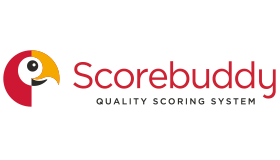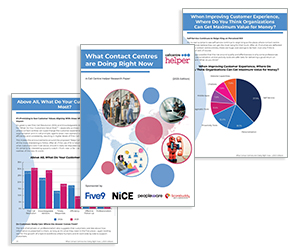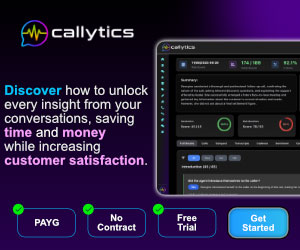Dick Bourke of Scorebuddy discusses the difference between customer support and customer success, before suggesting how they should work together.
In 2017, 64% of Americans contacted some form of customer service, according to Statista. But did they interact with customer support or customer success?
Is there a difference?
In many businesses, customer support and customer success are two terms that are thrown around interchangeably. Companies use both to talk about creating a quality customer experience, but although these functions have many similarities, they are each unique.
Customer support inherently satisfies customer problems and produces great experiences, while customer success takes a long-term view of how to delight customers and keep them coming back. One without the other does only half the job.
In this article, we’ll take an inside look at customer support in combination with customer success to highlight how they can work together, despite their differences, to produce an overall better customer experience.
What Is Customer Support?
According to research by Microsoft, one in three people (30%) believe that speaking with a knowledgeable and attentive call centre agent is the most important aspect of customer service. That’s the definition of customer support.
Customer support involves helping a customer overcome an issue or problem that occurs while interacting with your company’s products or services. It also involves advising customers to find more suitable ways to utilise your services, independently, to overcome an issue. In essence, customer support gets involved when someone contacts your call centre for help, accesses your FAQ page, or other communication touch points.
Customer support is a reactive process which focuses on providing solutions as specific problems arise. Think of it as a once-off interaction that your team has an opportunity to delight the caller with a positive customer experience. This could be as simple as first call resolution or as complicated as escalating the issue to a point where the customer feels their issue has been recognised and resolved to their satisfaction.
What Is Customer Success?
On the other hand, customer success focuses on long-term impacts and starts at the beginning of the customer journey.
Through historical data and behavioural analysis, a customer success team can pinpoint problems or opportunities throughout the customer journey. In turn, this information can aid in designing a professionally directed strategy for maximising lifetime customer value through consistent support and investing in building relationships.
This could be as simple as responding to customer enquiries on social media, which 74% of millennials report boosts their perception of a brand (Microsoft). This could come in the form of developing in-depth product and service training sessions or more robust platforms such as Learning Management Systems (L.M.S) to add increased value to customers.
The Difference Between Customer Support and Customer Success
Customer support and customer success teams need to work together for a positive customer experience. But for that to happen, you need to understand the major differences between support and success.
1. Reactive vs Proactive
In general, customer support is a reactive process. Support teams are responsible for helping customers only once they reach out to you with a question or an issue.
In contrast, customer success is a proactive approach. It focuses on collecting, analysing, and using data to make the customer experience streamlined from the beginning to end of the customer journey. The customer success team’s goal is to help customers before a problem or question ever occurs by empowering and educating them with the tools to manage their own requirements.
2. Transactional vs Relational
Customer support interactions are mostly transactional, meaning they begin when a customer contacts you and end with a resolution in place.
On the other hand, customer success is a never-ending process that focuses on building long-term relationships. To succeed, your customer success team must get to know your customers on a personal level to understand, as well as anticipate, their needs and wants. Only then can the team offer better ways to promote your products and services, thereby enhancing the overall customer experience.
3. KPIs & Metrics
Customer support metrics typically revolve around conflict resolution, answering phone calls, and ensuring positive results at the end of each customer interaction.
Customer success is interested in the long-term impacts of every interaction. KPIs include:
- Customer Churn Rates: 67% of customer churn is preventable if firms resolve issues the first time they occur.
- Retention Rates: good customer service increases customer retention rates by 5% and profits by 25% to 95%.
- Repeat Purchases: 52% of consumers say they have made an additional purchase from a company after a positive customer service experience.
- Sales Revenue: companies that excel at customer experience drive revenues 4% to 8% higher than their competitors.
Why Customer Support and Customer Success Should Work Together
Ideally, customer support and customer success would work together in tandem within your company to provide a more holistic customer experience that can result in increased customer satisfaction.
Your customer success team should focus their efforts on developing a solid customer experience strategy.
- The goal: to delight customers with a smooth and informed sales and marketing experience that is lightning fast and includes excellent customer support.
Then, your customer support team should be in the trenches, providing solutions to real-time customer problems. This includes enhancing the customer experience through the call centre, live chat, email, and other forms of contact.
- The goal: to make every interaction a positive experience.
If both groups are driven to help your customers, the results will speak for themselves. Just make sure that both teams are on the same page, working collectively towards the common goal of excellent end-to-end customer experience.
For example, if your customer support team consistently encounters the same issue or complaint, that information should be shared with customer success and vice versa.
Clear communication from support teams allows customer success teams to make changes to the product, service, or onboarding training to proactively eliminate the issue moving forward.
Creating an ecosystem between both teams is a sure-fire way to help ‘support’ the ‘success’ of the customer experience and business as a whole.
Final Thoughts
In conclusion, customer support and customer success departments can help your customers grow and achieve their dreams. Organisations require both to deliver a quality customer experience that results in loyal customers who consistently invest in your business, both personally and financially.

Dick Bourke
The more your customer support and customer success teams work in unison to proactively and reactively enhance the customer journey, the more you’ll delight and empower your customers for an overall better customer experience.
Lastly, I’d like to leave you with an insightful quote from career coach David J. Greer: “A customer talking about their experience with you is worth ten times that which you write or say about yourself.”
This blog post has been re-published by kind permission of Scorebuddy – View the Original Article
For more information about Scorebuddy - visit the Scorebuddy Website
Call Centre Helper is not responsible for the content of these guest blog posts. The opinions expressed in this article are those of the author, and do not necessarily reflect those of Call Centre Helper.
Author: Scorebuddy
Published On: 26th Apr 2019 - Last modified: 1st May 2019
Read more about - Guest Blogs, Scorebuddy






 Scorebuddy is quality assurance solution for scoring customer service calls, emails and web chat. It is a dedicated, stand-alone staff scoring system based in the cloud, requiring no integration.
Scorebuddy is quality assurance solution for scoring customer service calls, emails and web chat. It is a dedicated, stand-alone staff scoring system based in the cloud, requiring no integration. 









